ASRock Rack GENOAD8UD-2T/X550 Management
The ASRock Rack GENOAD8UD-2T/X550 has an onboard ASPEED AST2600 BMC.
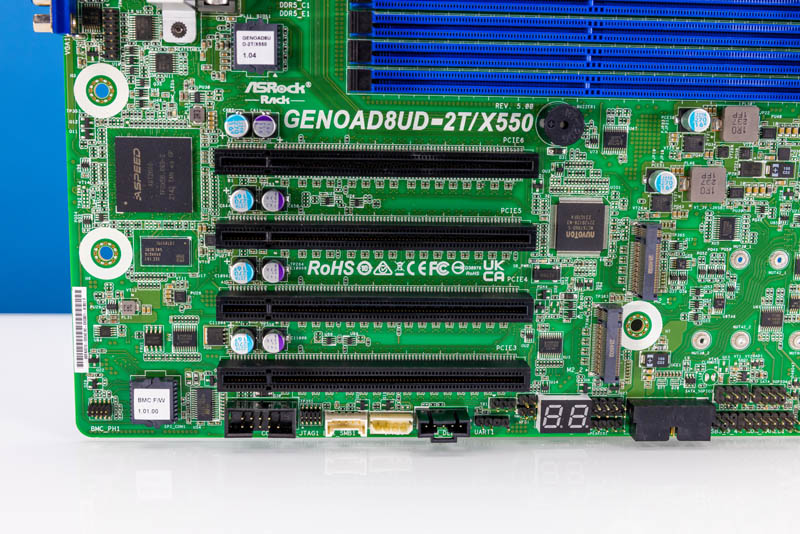
As such, it has a management interface for out-of-band management. That means we get an updated ASRock MegaRAC IPMI management interface (and Redfish API) solution versus what we saw on the older platforms.
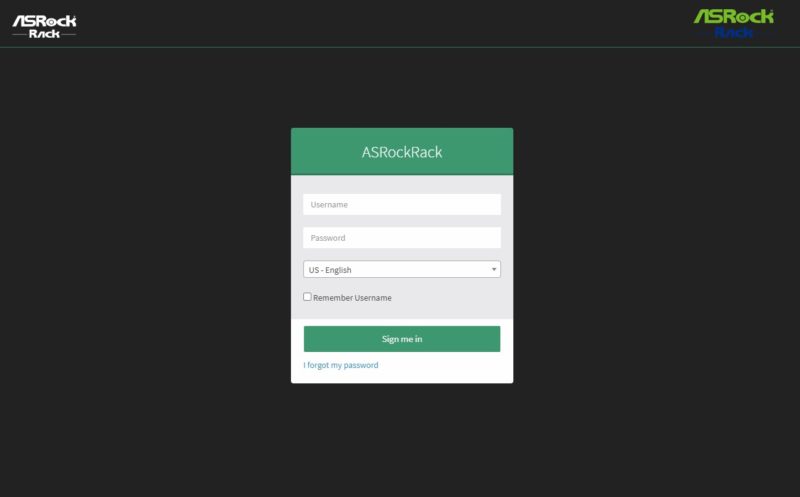
That includes features like HTML5 iKVM functionality included.
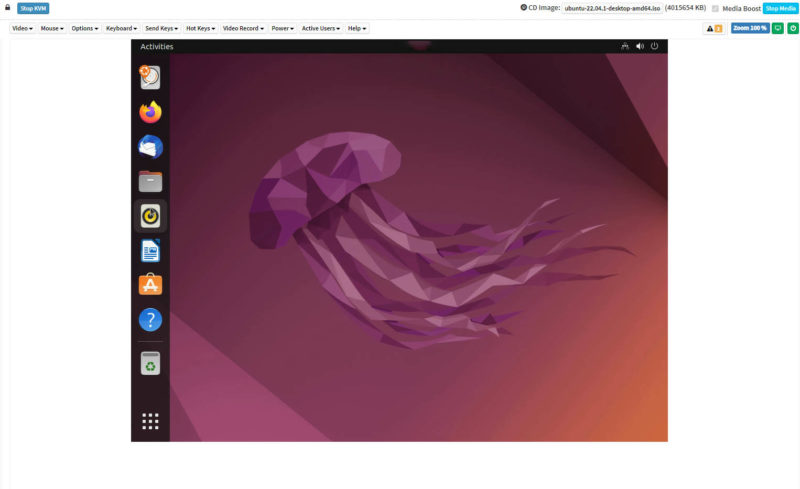
Recently, Supermicro made a change to licensing the remote media mounting feature that we covered in: How to Add Virtual Media to a Supermicro Server via HTML5 iKVM Web IPMI Interface. ASRock Rack does not charge for this feature and it is one that many admins use.
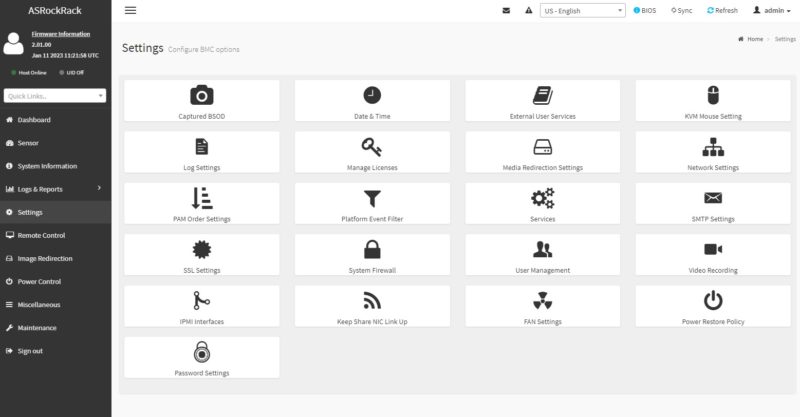
The new platform still uses the default username and password of admin / admin, but it now has a requirement to change the password after the first boot:
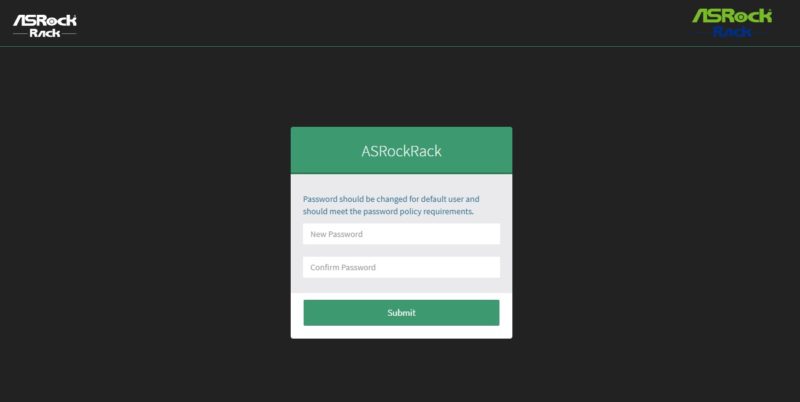
You can learn more about why this is required so the old ADMIN/ ADMIN credentials will not work in Why Your Favorite Default Passwords Are Changing.
Next, let us get to the performance and our final thoughts.
ASRock Rack GENOAD8UD-2T/X550 Performance
Performance on this platform was super interesting. One of the practical challenges was cooling the system. We had the Dynatron J10 2U AMD EPYC Genoa heatsink but we instead used the Dynatron L32 SP5 1U Liquid Cooling solution. This did not fit in any chassis we were using, but with the liquid cooler, we were able to cool a 96-core CPU.
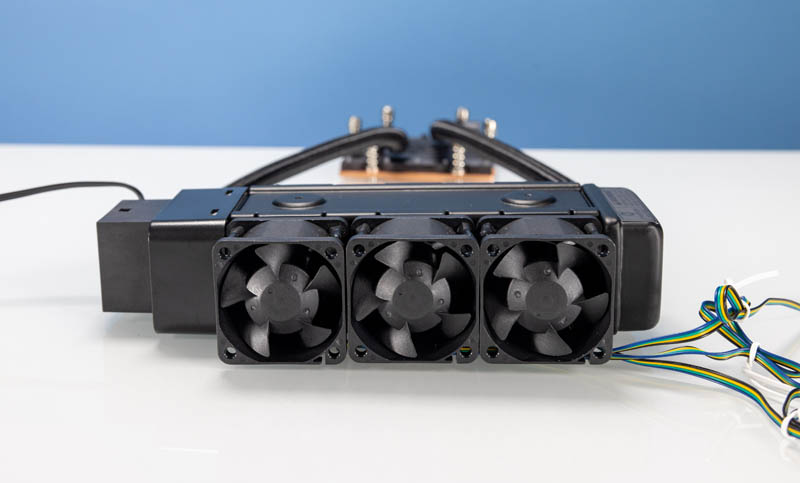
Figuring out what we needed on the cooling side was another challenge. The Dynatron J10 was not cooling the AMD EPYC 9654 enough. Here is the side-by-side of the performance of the two coolers:
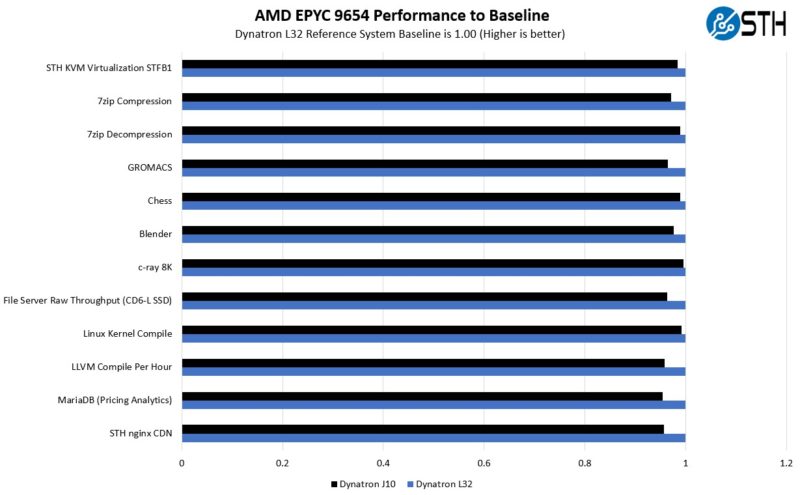
This very well could just be the motherboard or the environment, but given what we saw here, we decided to use the Dynatron L32 with this platform.
Once we had our cooling sorted, there was another question. How does this platform compare to AMD EPYC 9004 Genoa platforms that have a full set of 12x DDR5 DIMM channels? That was perhaps as we might expect.
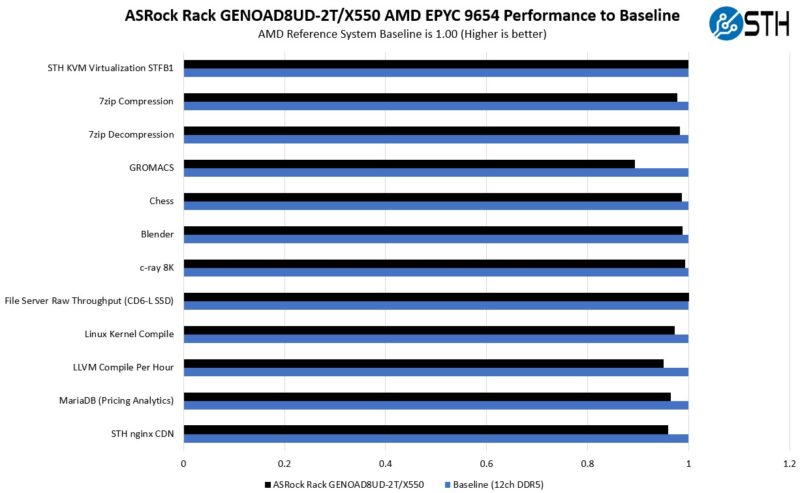
We certainly lost some performance with the 8-channel design versus a full 12-channel design. If we were running something almost purely memory bandwidth bound like STREAM Triad, we would of course have larger variances. There are some applications that are effectively not memory bandwidth sensitive after a minimum threshold is reached, and those applications performed well. For a lot of applications, 8x DDR5 memory channels are plenty since it provides roughly the same bandwidth per core as we had in the 64-core 8-channel DDR4-3200 generation. Suffice it to say this platform is going to be at best equal to full 12-channel memory systems in the best case, but can also be worse since one is losing a third of the memory bandwidth on the platform as a trade-off for size.
If you want to learn more about why DDR5 channels are expanding, and about RDIMMs versus UDIMMs in the DDR5 generation, check out Why DDR5 is Absolutely Necessary in Modern Servers.
Next, let us get to our key lessons learned.




Honestly, the biggest thing holding me back from the SP5 platform is the lack of a quiet cooler like Noctua built for SP3. EK has a waterblock but that gets expensive.
I’m sure I could search it out, but does ASRock/Rack provide a chassis designed around the 10.4×10.5?
For servers, I build barebones more than try to piece together a mainboard with a psu/chassis.
I don’t have time to hunt out oddball ATX sizes…that’s what my gaming workstation is all about, hobbyist stuff. I love supermicro builds, but over the years I’ve moved to just buying the barebones if I’m “building a server” versus buying a Dell/HP/Lenovo box. And in a homelab I’m buying ebay servers on the cheap…not building new.
It’s cool to see, but I don’t think I’d get this product outside of a barebones offering from Asrack…which is perfectly fine, but I’d rather see the review of that because the backplane/chassis/psu matter just as much as the platform.
What is the idle power usage or the system used? Rome ended up around 100W, right?
Will this fit in a standard Fractal Define 7?
Now if the rest of the world would move along we could drop PCIe x16 slots altogether in favour of PCIe Gen5 x8 MCIO sockets or similar and cable the interconnect.
Just imagine how much easier to make a mobo without x16 slots. How much easier to build a platform around air flow not those darn slots. Your mini ITX board could even provide the entire suite of lanes.
Shorter traces, should even be cheaper. Oh wait, who am I kidding…
Losing 1/3 of the memory bandwidth seems an unfortunate trade-off. Could a more standard of ATX size have accommodated the extra memory slots?
I’m looking forward to the follow-up project built using this motherboard.
Just to trouble you further with product names, Toshiba uses ‘(‘ as a separator in their optocoupler part numbers. And yes, they’re unmatched. Digikey has plenty: https://www.digikey.com/short/93bt5r41 “TLX9000(TPL,F” is one such example.
@Patrick or others. What exact 24pin to 12v EPS adapter is needed if the PSU does not have 3 x 12v EPS connectors?
“Many power supplies do not have three 12V inputs, and one needs to use an adapter to perform normal power functions from a standard power supply’s 24-pin ATX connector”
Yeah, they should just provide that 24-pin ATX to 3*12V adapter with the motherboard.
What can we do with these new fancy MCIO thingies ? I tried searching a bit, but am confused…
@Vincent Legoll: They do, according to the manual. It just provides a way to activate the ATX power supply – you can use a straight 12V supply, likely with no soft-power switch (the motherboard handles power-good internally, or at least the C246 WSI does).
Why won’t the VGA port die already?
Everything about this MB is forward looking except that darn analog blue port, but it keeps showing up when there are much better digital connectors.
@Dave: this is probably due to the old generation IPMI module used.
I would have prefered SFP+ instead of RJ45 10Gbe. You can always put a RJ45 SFP+ module if you need that, whereas your 10Gb switch may only have SFP+ ports and then it becomes useless (media converter excluded for sanity’s sake)…
Does this motherboard have ATX mounting hikes or not ?
Mounting holes
@Patrick – What chassis and what power supply did you use for the build?
Please post a detailed article on the full build with a complete parts list used.
I was planning on a similar / identical build and same motherboard and stumbled upon this review, but you didn’t give any information on the build, what parts you used or what power supply, or chassis that you managed to get this to fit into. Would be helpful if you gave us more details and posted pictures of the build.
I love STH, but at least finish the build article and post it so we can see what you used.
@Patrick – Also post some pictures and a link for the “24-pin ATX to 3*12V adapter” that you used. Does ASRock provide one with the motherboard?